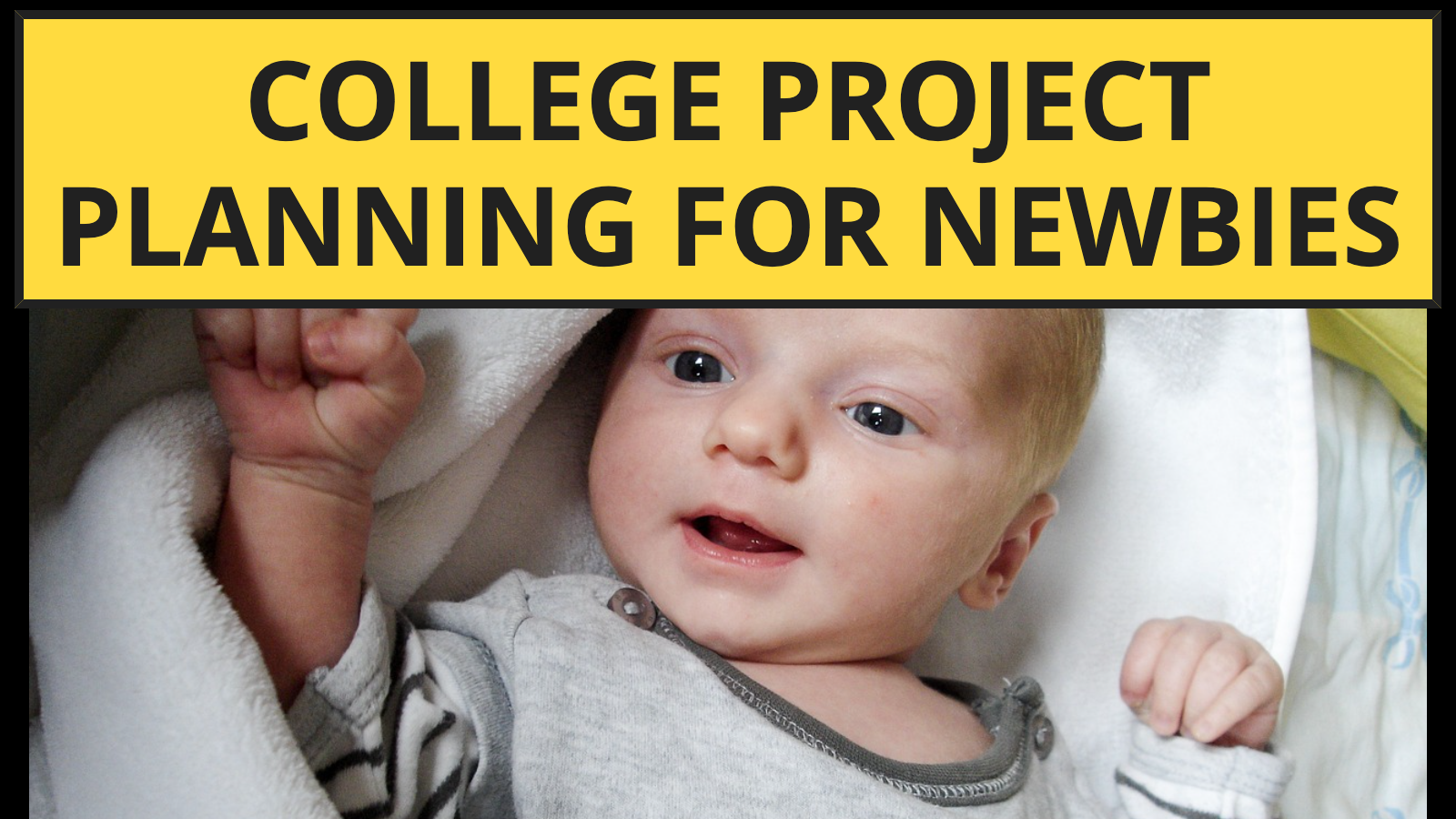College Project Planning for Newbies
 Ritik Makhija
Ritik Makhija
Project planning is an essential skill for any student who wants to succeed in their academic endeavours.
Tips and resources
Tip 1: Choose a project topic that aligns with your interests, skills, and career goals. This will make the project more enjoyable and meaningful for you. You can brainstorm some ideas with your classmates, professors, or mentors, or use online tools like MindMeister or Coggle to create mind maps of potential topics.
Tip 2: Define the scope, objectives, and deliverables of your project clearly and realistically. This will help you avoid scope creep and ensure that you meet the expectations of your stakeholders. You can use a project charter template like this one to document your project scope.
Tip 3: Break down your project into manageable tasks and assign them to different team members. This will help you distribute the workload evenly and track the progress of each task. You can use a work breakdown structure (WBS) template like this one to organize your tasks.
Tip 4: Create a project schedule that shows the start and end dates of each task, the dependencies between them, and the milestones of your project. This will help you plan your time and resources efficiently and avoid delays or conflicts. You can use a Gantt chart tool like GanttProject or TeamGantt to create your project schedule.
Tip 5: Monitor and control your project performance regularly and communicate with your team and stakeholders effectively. This will help you identify and resolve any issues or risks that might affect your project quality or outcome. You can use a project dashboard tool like Smartsheet or Zoho Projects to track and report your project metrics.
Project charter
A project charter is a document that summarizes the main aspects of a project, such as its objectives, scope, stakeholders, and responsibilities. It is used to get approval from the project sponsor and to communicate the project’s value and expectations to the project team and other stakeholders. A project charter also appoints the project manager, who is the person in charge of leading and executing the project.
A project charter typically contains the following information:
Project title: A concise and descriptive name for the project
Project purpose: A brief statement of why the project is being undertaken, what problem or opportunity it addresses, and what benefits or outcomes it will deliver
Project objectives: A list of specific, measurable, achievable, relevant, and time-bound (SMART) goals that the project aims to achieve
Project scope: A description of what is included and excluded in the project, such as the deliverables, requirements, assumptions, constraints, and boundaries
Project stakeholders: A list of the individuals or groups who have an interest or influence in the project, such as the sponsor, customer, team, suppliers, etc.
Project roles and responsibilities: A definition of the key roles and responsibilities of the project team and other stakeholders, such as who is accountable, responsible, consulted, or informed for each task or decision
Project authority: A statement of the level of authority and autonomy that the project manager has over the project resources, such as budget, schedule, quality, etc.
Project budget: An estimate of the total cost of the project, including the sources and allocation of funds
Project schedule: An overview of the major milestones and deadlines of the project, such as the start and end dates, key deliverables, reviews, etc.
Project risks: An identification and assessment of the potential threats or uncertainties that could affect the project’s success, such as technical issues, market changes, resource shortages, etc.
Project approval: A signature or endorsement from the project sponsor or other authorized person that confirms their agreement and support for the project
A project charter is an important tool for initiating and planning a project. It helps to clarify the project’s vision and scope, align the expectations and interests of the stakeholders, and empower the project manager to lead and execute the project effectively. A well-written project charter can also help to avoid conflicts or misunderstandings during the project lifecycle.
Difference between a project charter and a project plan
A project charter and a project plan are two important documents in project management, but they have different purposes and contents. Let me explain the difference between them in simple terms.
A project charter is a document that summarizes the main aspects of a project, such as its objectives, scope, stakeholders, and responsibilities. It is used to get approval from the project sponsor and to communicate the project’s value and expectations to the project team and other stakeholders. A project charter also appoints the project manager, who is the person in charge of leading and executing the project.
A project plan is a document that outlines the project scope and objectives based on the project charter. The project plan identifies the specific instructions for executing and managing the project. It also determines the milestones and deadlines, each person’s responsibilities and the organizational structure of the project team.
The main difference between a project charter and a project plan are:
When they are prepared: A project charter is written right before the project has started; a project plan is written after the project charter is approved.
Who prepares them: The sponsor writes the project charter, the project manager writes the project plan. Since the sponsor is usually someone with higher authority than the project manager, the project charter gives more power and autonomy to the project manager.
Their mission: The project charter aims to authorize the project, the project plans aim to guide the implementation of the project.
Intended audience: The project charter is for stakeholders and project manager, the project plan is for the project team and other people involved in the execution of the project.
Subscribe to my newsletter
Read articles from Ritik Makhija directly inside your inbox. Subscribe to the newsletter, and don't miss out.
Written by

Ritik Makhija
Ritik Makhija
Greetings! I am a skilled full-stack developer who is passionate about utilizing technology to bring innovative solutions to life. My comprehensive skillset includes not only software development but also knowledge of AWS Cloud, Blockchain Development, Figma-based Application Design, and Marketing Strategies. My objective is to use my skills to help businesses and organizations turn their ideas into reality, foster growth, and make a positive impact. I have a proven track record of delivering top-notch software and imaginative solutions. I am eager to tackle new challenges and opportunities within the field.